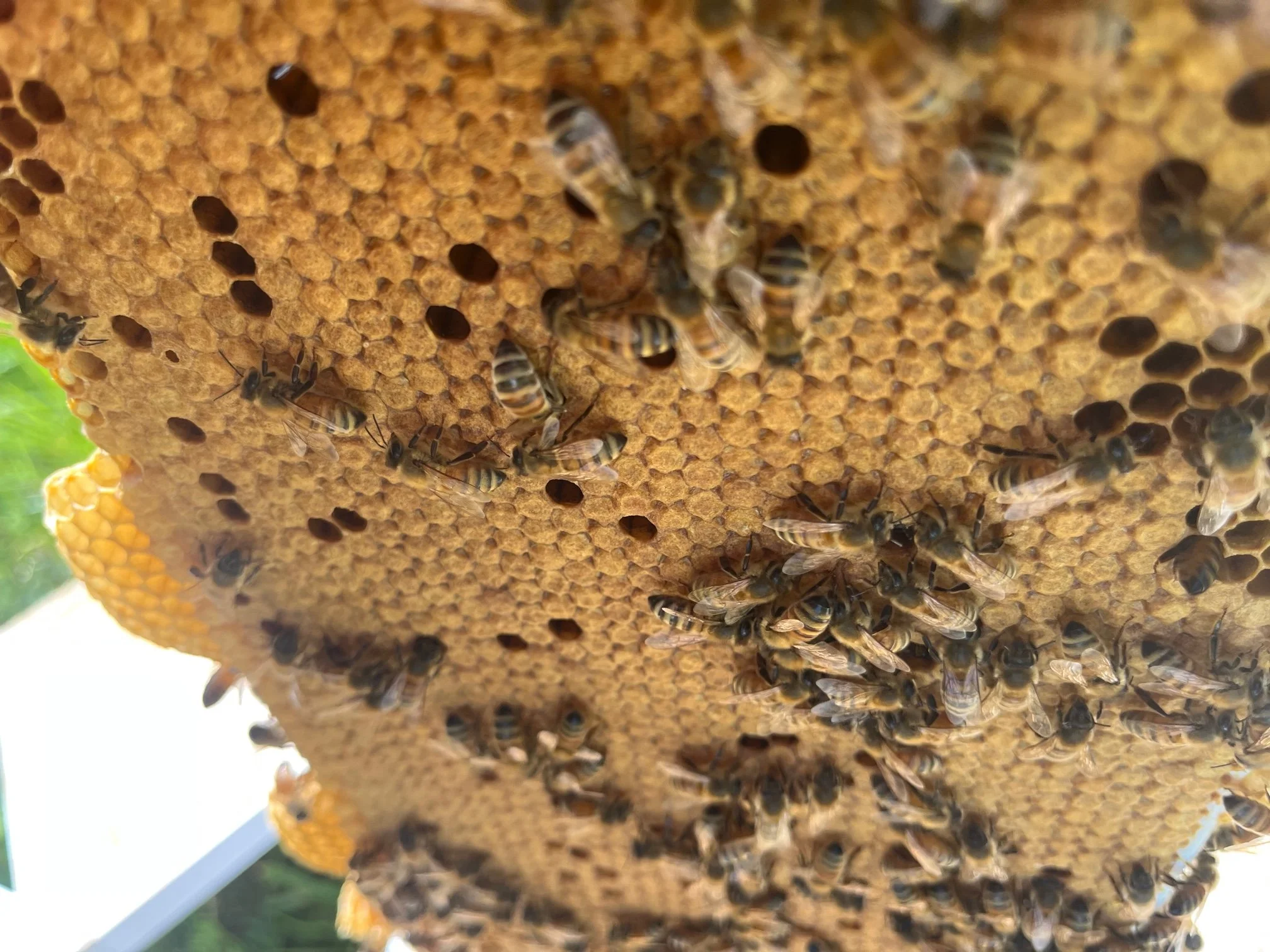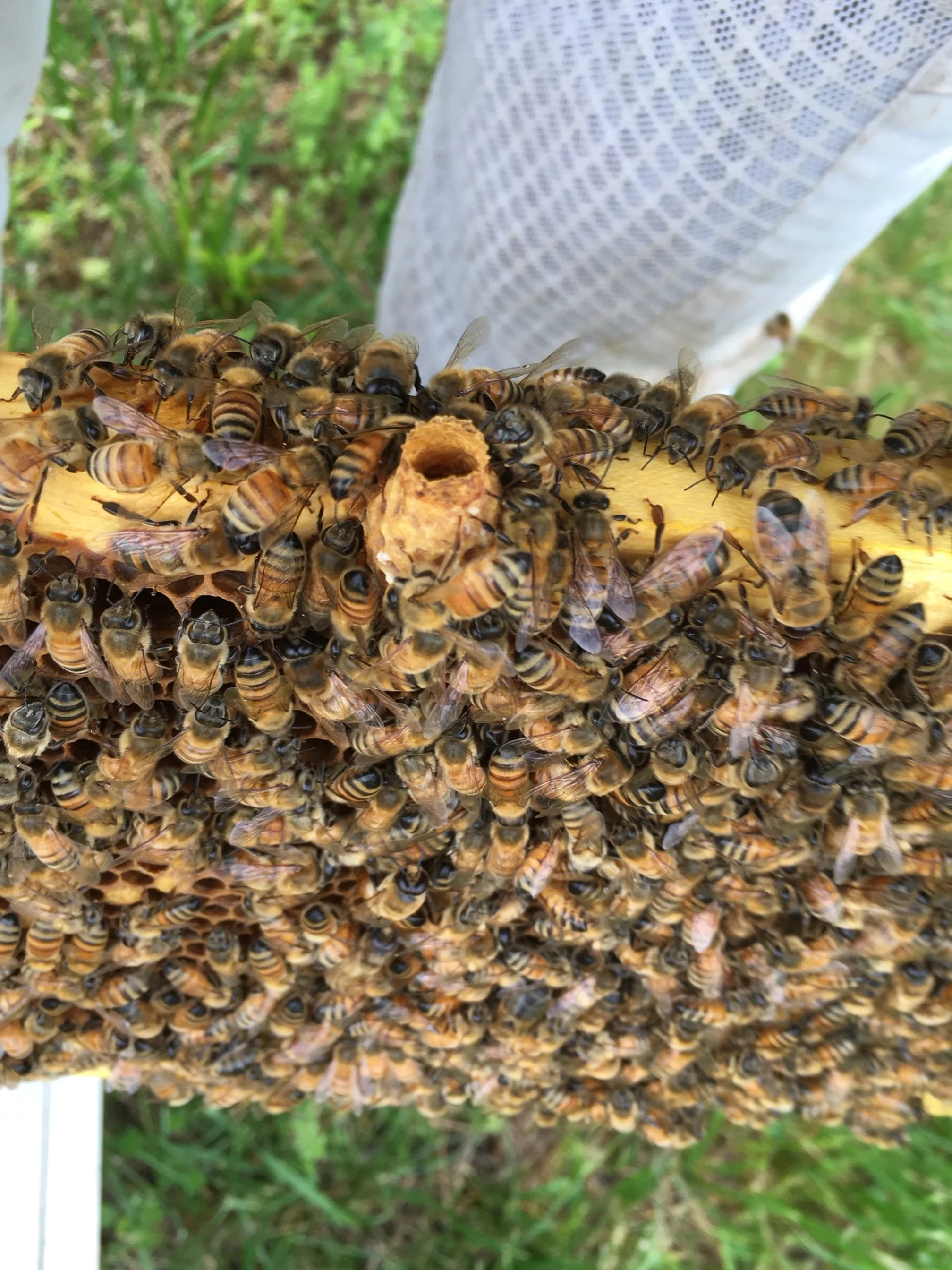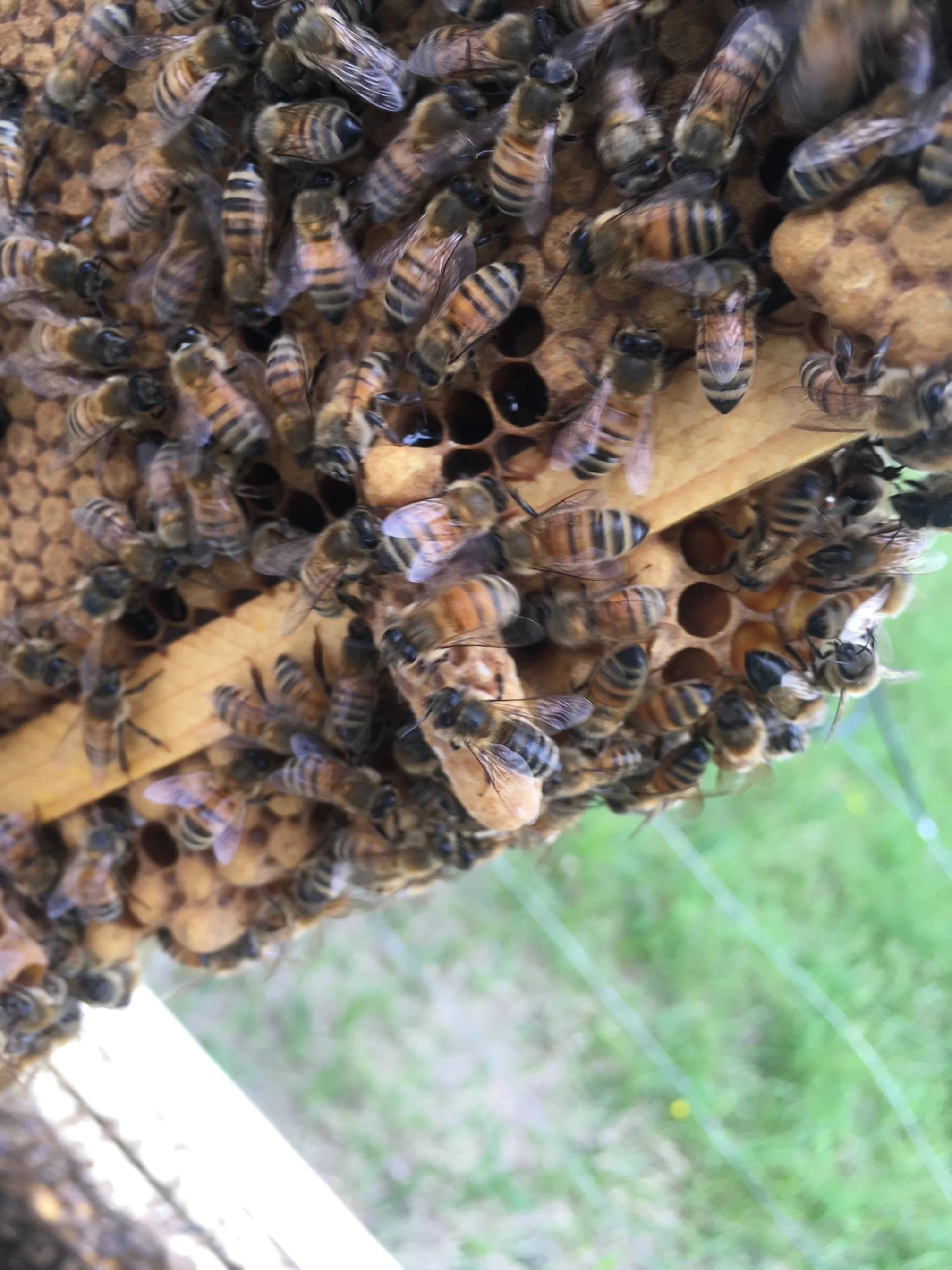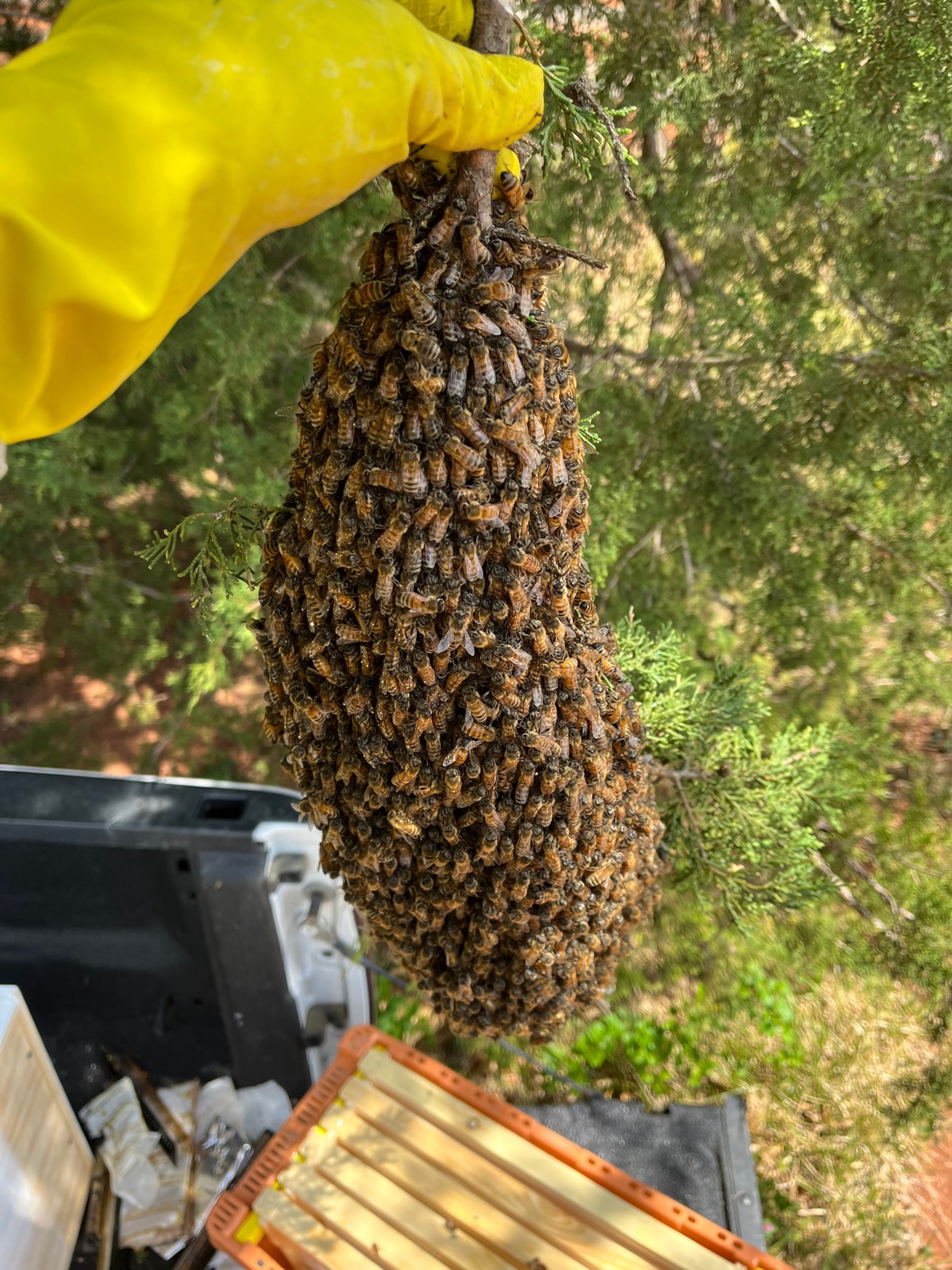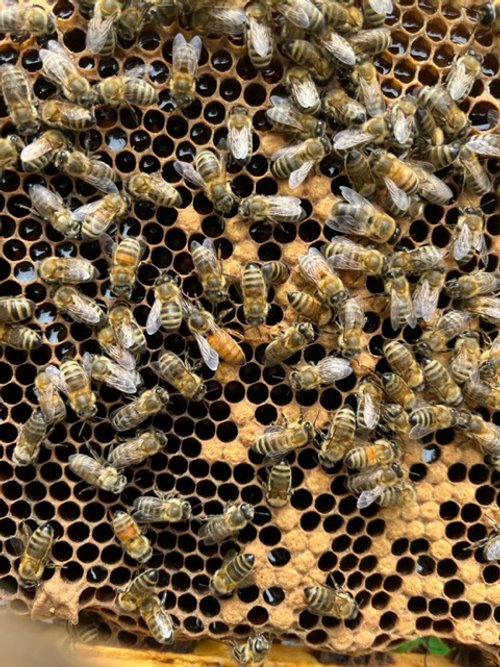What is a Swarm?
A swarm sits in a tree branch
“These bees are swarming everywhere!”
I hear it all the time, and its probably one of the most commonly misused words surrounding bees.
Swarming is not just a word used to describe bees flying frantically. In bee land, a swarm is a very specific, big, exciting event. Like graduation day.
In the spring in Virginia, most of our hardwood trees bloom. This means there is nearby, efficient, and plentiful food resource for most hives. They don’t have to work very hard to fill all their comb with nectar and pollen. Great for us because we get honey soon (post on this process upcoming, stay tuned), Great for the bees too. Their nutritional status is so good and temperatures are just right for raising brood (baby bees) that the queen is laying at her max production rate of eggs/day. She usually tops out at about 1,000.
A frame of bees that is completely full of pupae. Notice almost every hexagon is sealed - the queen put an egg in each. There is a baby bee in each cell. There is no more room for eggs! They’re full!
The colony realizes it has a problem and an opportunity. 1. They’re running out of room and 2. There is so much food in the environment they could start from scratch. So they start to plan a swarm.
They do this by building queen cells - the chamber in which a baby queen is made. The original queen lays an egg in the early queen cell, and the bees build the chamber around the baby queen. Just when the baby queen is about to come out, the original queen and about half the adults in the hive just leave. Swarms can have up to 80 thousand adults with the queen.
An emerged queen cell (left) where the baby queen has hatched, and a sealed queen cell (right) which is about to hatch, both of these hives already swarmed.
They form a blob, called a bivouac, usually in a tree nearby to decide who is staying and who is going. Sometimes they hang out for an hour, sometime a day. When they’re ready, off they go. The queen always travels with them, and they are always with her. What’s cool about the bivouac is this is an opportunity to catch the bees. If you can gently get the queen and the blob into a bee box with some comb, and convince them they’ve found a suitable home without even looking, you have just “caught a swarm” and you have free bees!
An easy catch
They usually form another bivouac approximately a mile away, although there is no set rule. This satisfies the outward expansion instinct and insures they won’t be much competition to the home hive they just left. From this bivouac, they send scouts out to look for a new house. The scouts are looking for a nice cavity - usually wood - large enough for the colony to make lots of wax and lots of babies and store lots of honey.
If the scout finds a suitable location, she travels back to the bivouac and uses dance to communicate her find. Other scouts will check it out, and if they agree the spot is good, off the go. They move into the new hole, start making wax, they queen lays an egg in the first hexagon she can find, and now our originial queen and her bees have formed a new colony.
Back at home, in the home hive, the baby queens (called virgins) are hatching. They eliminate each other until there is only one. The winner then goes on mating flights to mate with drone bees. Shortly after, she begins laying eggs, and now our home hive has a new queen. This is not always successful, as the virgin is alone and vulnerable on the mating flights. As beekeepers, we can intervene when the queens don’t return by adding a new queen or new eggs.
A mated queen (left) vs a virgin queen (right). Notice the difference in abdomen length. The virgin will go on her mating flights, then start laying eggs like her mom did!
Swarming is a completely natural process that indicates a healthy hive. But we do make efforts to try to suppress swarming in our operation. Why? Because the swarm leaves our management, which means we cannot provide best management practices to it, which is less than ideal. Additionally, swarms can move into old houses, barn floors, chimneys, and other locations the scouts deemed appropriate which are a huge nuisance. To suppress swarms, we give the bees plenty of space so they never get crowded, split the hive to replicate a swarm but with a controlled system so we get to keep both sides, and we cut out queen cells as they are developing. The swarm generally won’t leave without a queen, and they usually won’t leave until the baby queens are ready. So by removing the original queen ourselves and preventing baby queens from developing, we can sometimes suppress it - but nature has a way of getting what she wants. Thank goodness.
April is the most common month for swarms in Virginia. Beekeepers have spent this month chasing bees, working until dark, and trying to prevent swarms. Check on your beekeeping friends, we are tired :)



